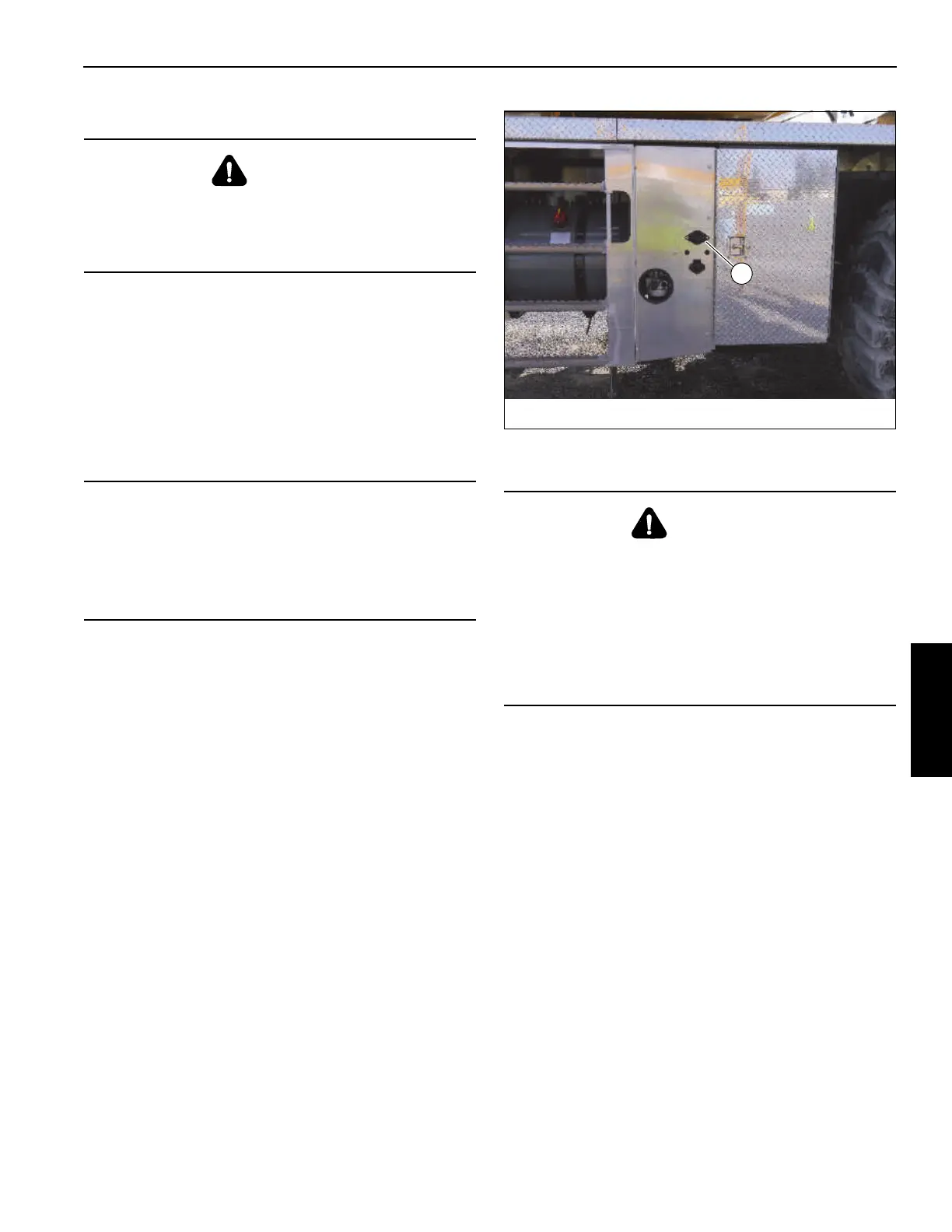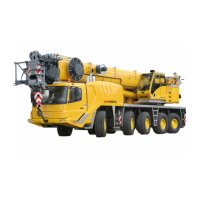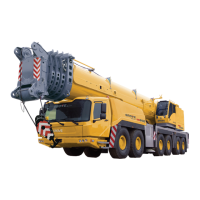Grove Published 7-23-2020, Control # 668-02 4-175
GRT9165 OPERATOR MANUAL OPERATING PROCEDURES
STOWING AND PARKING
When parking crane, do the following:
1. Remove load from hook.
2. Fully retract all boom sections.
3. Lower boom to normal travel position.
4. Engage swing brake and swing lock pin.
5. Retract all jack cylinders and outrigger beams.
6. Park crane on a stable surface.
7. Apply parking brakes and if necessary, chock wheels.
8. Make sure all operating controls are in neutral position.
9. Shut down engine following proper procedures specified
in this Operator Manual and applicable engine manual.
10. Remove keys.
11. Close and lock, if applicable, all windows, covers, and
doors.
12. Set battery disconnect switch (1, Figure 4-210) to the
OFF position if machine will be inactive for over 24
hours.
To avoid possible engine fault codes and undesirable
operation, make sure that the Ignition Switch has been
in the OFF (0) position for 2 minutes before
disconnecting the batteries from the crane.
LEAVING CRANE UNATTENDED
The configuration in which the crane should be left while
unattended shall be determined by a qualified, designated
individual familiar with the job site, configuration, conditions,
and limitations.
LONG-TERM STORAGE
Guidelines for tires on cranes parked for long periods:
1. If possible, place the crane on jacks to keep the weight
off the tires.
If the crane cannot be placed on jacks, move the crane
at least once a month to prevent permanent distortion of
tires.
2. Keep the inflation pressure as recommended.
DANGER
Tipping Hazard!
Never park crane near holes, on rocky surfaces, or on soft
spots. This may cause crane to overturn, resulting in
injury or death to personnel.
CAUTION
Avoid Crane Damage!
Do not engage the parking brake while the vehicle is
moving. Damage to the crane can occur.
Disengage the parking brake before driving. Damage to
the crane can occur.
WARNING
Tipping Hazard!
Changing weather conditions including, but not limited to,
wind, ice accumulation, precipitation, flooding, lightning,
etc. should be considered when determining the location
and configuration of a crane when it is to be left
unattended.
Failure to comply with these instructions may cause death
or serious injury.

